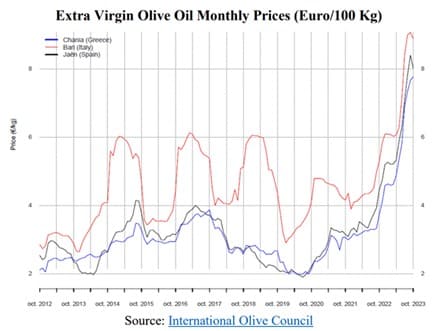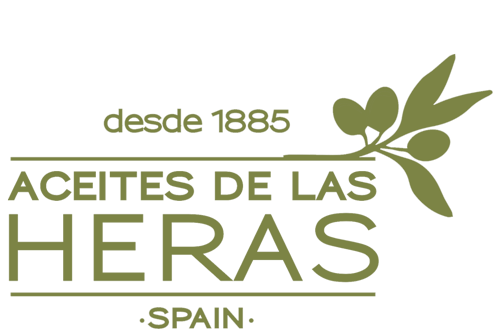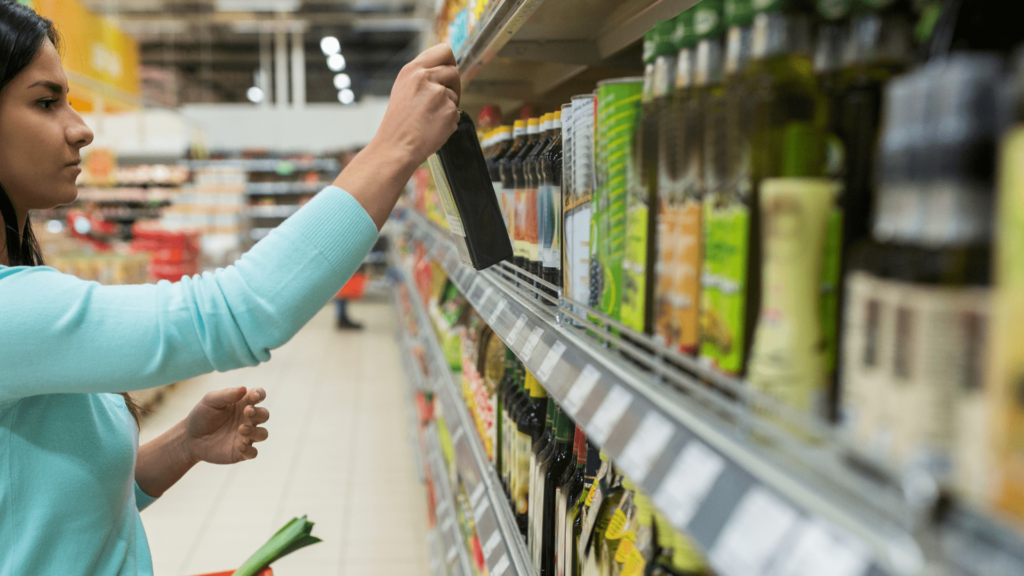News
The Rise of Liquid Gold: The Evolution of Olive Oil Consumption
According to the Olive Oil Market Size study, the global olive oil market was estimated at USD 22.30 billion in 2022 and is projected to expand at a Compound Annual Growth Rate (CAGR) of 5.2% from 2023 to 2030.
The virgin olive oil segment is projected to expand at a CAGR of 6.1% until 2030. On one hand, the food and beverage segment had the largest share of revenue at 43.4% in 2022 and is expected to maintain its position. On the other hand, the pharmaceutical segment is forecasted to grow at a CAGR of approximately 5.3% during the mentioned period.
The increasing awareness of the health benefits associated with olive oil consumption has led more people to adopt healthier diets. Additionally, the spread of Mediterranean cuisine worldwide has contributed to its popularity, and consequently to the increase in global demand. As seen in the bottom chart prepared with data from the IOC, olive oil consumption nearly doubled between 1990 and 2021.

According to these data, in the campaigns 2019/20, 2020/21, and 2021/22, olive oil consumption has grown faster than production.
Although this trend has been interrupted in the campaigns 2022/23 and 2023/24, the increase in consumption reflects changes in consumer lifestyles. COVID-19 has altered our behavior, and consumers have shifted to purchasing higher-quality products, which has also led to an increase in the value of global trade.
How do consumption and price affect the different categories of olive oil?
Among the types of olive oil, we can distinguish 4 categories:
The factors affecting the price and consumption of olive oil influence all four categories, but it’s important to note that both the price and consumption of each category fluctuate independently. In this regard, it’s worth highlighting that during 2023/24, the high price of extra virgin and virgin olive oil has resulted in increased demand for olive pomace oil due to its more affordable price. This shift in consumption has, in turn, kept the price of olive pomace oil high.
To illustrate the fluctuations in olive oil consumption in the market, we have grouped all categories together to make it easier to understand, as although there may be slight variations among them, they generally follow a very similar trend.
Why does olive oil consumption continue to increase?
Globally, this past year is the first time olive oil has not reached one percent of total consumption of animal and vegetable fats (due to low production in the last two harvests). In a typical year, olive oil accounts for three percent of the category. Therefore, we can affirm that more production is needed, as we see that there is not enough olive oil to meet the growing global demand.
The main reasons driving olive oil consumption are as follows:
Health Benefits
On one hand, olive oil is widely recognized for a range of benefits that distinguish it as a healthy and highly desirable food in current dietary trends. Among these benefits, it’s interesting to highlight its high content of monounsaturated fatty acids and phenolic antioxidants, which combat oxidative stress and inflammation. Additionally, it has also been associated with reducing the risk of cardiovascular diseases, lowering cholesterol levels, and overall health improvements. It is an excellent source of vitamin E and possesses notable anti-inflammatory properties.
Versatility
On the other hand, the culinary versatility and distinctive flavor profile of olive oil position it as a favorite choice among discerning consumers. It is a fundamental ingredient in various culinary applications, from salad dressings and marinades to sautéing and baking. The exceptional taste and aroma of olive oil enhance the flavors of various dishes, imparting a touch of refinement and complexity.
The Mediterranean Diet, named the best diet for the year 2024 for the seventh consecutive year
In a context where the pursuit of healthy eating is increasingly prioritized, olive oil stands out as a cornerstone of the Mediterranean diet, which has been named for the seventh consecutive year as the best diet for 2024 by US News & World Report.
Responding to the growing demand for olive oil: Challenges of Climate Change
As we have recently witnessed, climate change is the great challenge we face. We are witnessing its impact on olive oil production, particularly in the Mediterranean region, where there is a trend towards less rainfall and higher temperatures, as stated by Jaime Lillo López, executive director of the International Olive Council (IOC), to Olive Oil Times.
Fortunately, olive cultivation can play a significant role in the fight against climate change, as the more than 11 million hectares of olive groves form a sort of artificial forest that removes 4.5 tons of carbon dioxide per hectare from the atmosphere each year. Thus, it is estimated that the production of one liter of olive oil reduces more than 10 kilograms of carbon dioxide from the atmosphere.
It is even possible that the future of olive oil lies in research on increasing olive oil production outside the cradle of the olive, the Mediterranean basin. But until then, Spain remains the world leader in production.
If you want to learn more about how climatic conditions affect the quality of olives, you can visit our blog article “The Olive Tree and its Care: Learning from Our Farmers.”
Olive Oil Consumption: A Regional Analysis (2018-2024)
As we explained in our publication “Olive Oil Prices: A Market-Defying Challenge”, these recent years have been marked by a dynamic and atypical market. Next, from Aceites de las Heras, we will delve into detail to understand how these variations have affected both the production and consumption of olive oil worldwide.
Consumption and Production of Olive Oil Worldwide 2018-2023

2018/2019: Pre-Pandemic
During the pre-pandemic period, from 2018 to 2019/20, we observed an increase in olive oil consumption by 5.69%. This is due to two factors: firstly, the overall growth trend in consumption for the reasons explained earlier, and secondly, to an oversupply in the 2018/19 campaign, which resulted in very low prices. These prices made the product easily purchasable globally, even competing with vegetable oils in markets where purchasing power is lower.
2019/2020: Initial Impact of the Pandemic
Production saw a significant decline of 7.62% to 3020 thousand tons. However, thanks to the availability of oil from the previous campaign, consumption could remain high and only decreased by 2.91% compared to the previous year.
2021/2022: Pandemic Aftermath and the Russia-Ukraine War
In 2021/22, we experienced a recovery in production, which coincides with the olive cycle, which typically alternates between years of higher and lower production. Consumption returned to a similar level, even higher than that of 2019/20, despite the price increase caused by the Russia-Ukraine conflict, which destabilized the vegetable oil market, affecting olive oils as well.
2022/2023/2024: Dramatic Production Decline
In the 2022/23 campaign, a dramatic production decline was observed. It decreased by 20% worldwide and by 45% in Spain compared to the 2021/22 campaign. Starting from prices that were already above average, the production drop led to a continuous price increase, also influenced by the forecast for the 2023/24 campaign, which was already estimated to be scarce due to drought and heatwaves throughout the Mediterranean.
As forecasts predicted, the 2023/24 campaign has also been poor, well below average. As reflected in the graph below, prices rose catastrophically at the beginning of the harvest in late 2023 and will remain high throughout 2024.

What has happened with consumption during this stage? Due to the scarce production and lack of supply, consumption has suffered a 17% decline globally, also affecting markets unable to withstand price increases due to the lower purchasing power of the end consumer. It’s worth noting that olive oil is easily replaceable by other vegetable oils, whose prices are much lower.
Europe: Mediterranean tradition

The analysis of olive oil consumption in Europe over the past few years, according to the International Olive Oil Council, shows that this continent remains a strong consumer, accounting for nearly 50% of global consumption.
Since 2022, Spain stands out as the largest consumer both in Europe and globally, although due to sensitivity to final consumer prices, it experienced a reduction in consumption in 2022/23, being surpassed by Italy and even the USA, as we will see later. According to Facua, the price increase in Spain has also translated into a 69% increase in the price of extra virgin olive oil in supermarkets in 2023. However, demand has not fallen much, as the number of units of olive oil sold remains very similar to previous years, but in smaller formats.
Furthermore, Spanish consumers have shifted categories, with regular extra virgin olive oil buyers switching to virgin, and virgin buyers moving to refined olive oil and olive pomace oil categories.

In contrast, the rest of the countries have fluctuated differently among themselves. On one hand, Greece and France have experienced a decline in consumption. We can highlight how France’s average consumption between 2018 and 2022 dropped from 137 thousand tons to an average consumption of 99 thousand tons in the years 2022/23/24, representing a decrease of 27.5% compared to the previous average.
However, countries like Germany and Switzerland have regained their olive oil consumption levels from before the year 2022. This could be due to the normalization of new prices in these markets, but also to other factors such as the pursuit of healthier eating habits. It is well known that Germany is the largest consumer of organic food in Europe, demonstrating that the end consumer cares about both their health and the environment.
Asia: Olive oil is trending in South Korea

In Asia, the countries consuming the most olive oil are Japan, China, South Korea, Thailand, and the Philippines. Among these countries, we see that Thailand and the Philippines have remained relatively stable in consumption over the past few years. Meanwhile, Japan and China have experienced a significant decline, being countries highly sensitive to price increases.
As for South Korea, it has experienced a substantial increase, as from 2018 to 2022, cumulative consumption increased by 90%. This means that it has been able to withstand market instability, and therefore, olive oil is gaining ground and market share compared to other vegetable oils.
Middle East and North Africa: Consumption decline in Turkey and Morocco

In the Middle East and North Africa, we observe different patterns in the evolution of olive oil consumption over the years. After the consumption decline in the 2020/21 year in Saudi Arabia and Tunisia, the last three years show some stability. On the other hand, Egypt remains within a range of stable consumption.
On the other hand, both Turkey and Morocco stand out for the contrast between the increase in consumption in 2023, which may be associated with a larger harvest that year, and the decline in the last year, due to a smaller harvest and higher prices.
America: The U.S. becomes the second-largest consumer of olive oil worldwide

Recently, we learned that in 2023, the United States became the world’s second-largest consumer of olive oil for the first time, surpassing Spain. A combination of the growing presence of olive oil in the U.S. and the significant decrease in production experienced in Spain in the last two harvests has caused these changes in the trend.
“The United States emerges as the second-largest consumer of olive oil in the world in 2023, surpassing Spain.”
Consumer behavior varies in each market, and while some markets, like the U.S., are less sensitive to price behavior, others, as seen in Spain, are more sensitive to these increases.
Meanwhile, Canada, Mexico, and Brazil remain fairly stable, with Mexico being the one that has lost the most consumption in the last two years.
Conclusion
Both the production and consumption of olive oil have doubled in the last 40 years, but the effects of climate change are disrupting prices, so the olive sector will need to address the increased demand by improving current plantations and incorporating new intensive and super-intensive cultivation systems with higher tree density per hectare.
Despite these challenges, olive oil remains a favorite among consumers due to its health benefits, versatility, and the popularity of the Mediterranean diet, named the best diet for the year 2024 for the seventh consecutive year.
Fortunately, olive cultivation can play an important role in the fight against climate change, as the millions of hectares of olive groves form a sort of artificial forest that removes 4.5 tons of carbon dioxide per hectare from the atmosphere each year.
There is thus a global need to better feed a growing population, so it is essential to adapt production to these new challenges.






